Adrian Smith + Gordon Gill wins Kazakhstan Astana World Expo 2017 competition
By Bustler Editors|
Friday, Nov 1, 2013
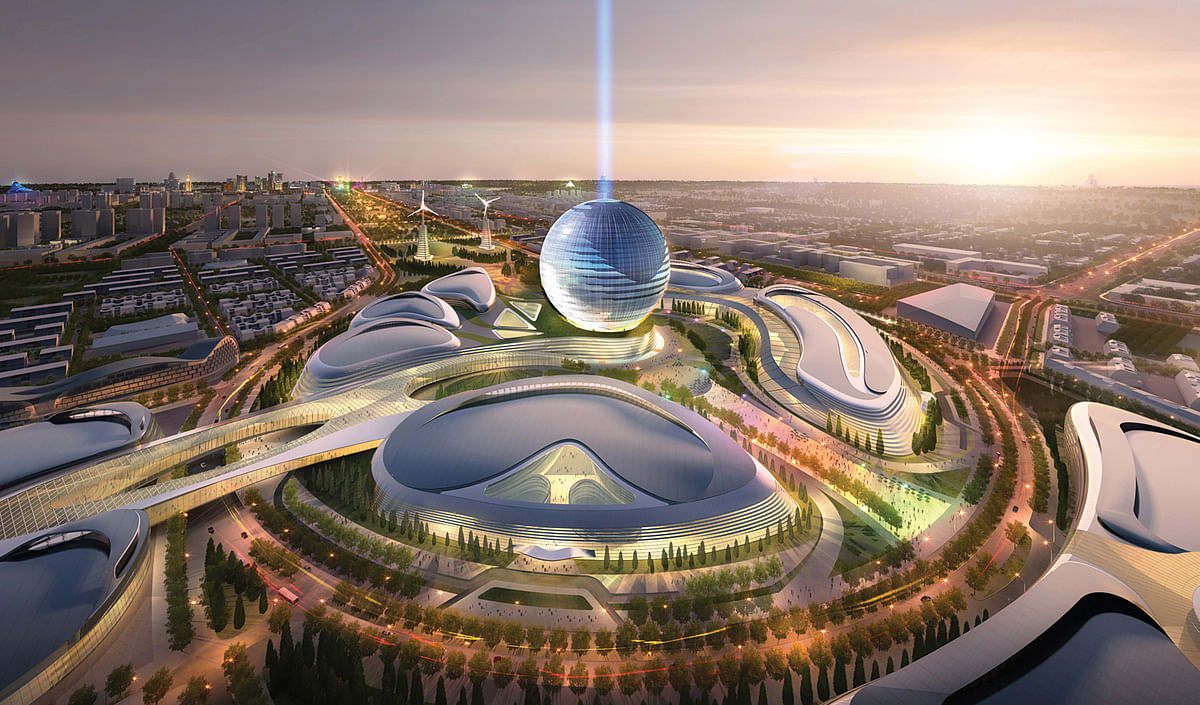
Related
Adrian Smith + Gordon Gill Architecture's design proposal was selected for the 2017 Astana World Expo exhibition site. Construction of the two-phase development is expected to begin in March-April 2014.
Winning proposal by Adrian Smith+Gordon Gill Architecture for Astana World Expo 2017 competition. Video © Adrian Smith + Gordon Gill Architecture
As we previously covered, 50 architects from around the globe -- including big international names -- submitted their proposals to the competition that began in February 2013. By September, the competition pool narrowed down to the final 10, which included UNStudio; Isozaki, Aoki & Associates; Manfredi Nicoletti; and Vasconi Architects.
The jury, known as the Technical Committee, consisted of notable architects and professionals working in sustainable development and energy efficiency. Economist and president of The Foundation of Economic Trends, Jeremy Rinkin supervised the committee.
Check out some images of AS+GG's winning proposal below.
From the AS+GG press statement:
"FUTURE ENERGY
AS+GG’s design for EXPO-2017 will embrace the Future Energy concept by becoming the first Third Industrial Revolution city, where energy consumed by the Expo community will be provided from renewable sources. Buildings will become generators of power and their energy will be stored using innovative technologies while being distributed by a smart grid. The Expo community will provide infrastructure to encourage and support the use of vehicles that use renewable fuels.
'The forms and language of the buildings are designed to reduce their energy needs and operate as 'power plants' that harness energy from the sun and/or wind,” says AS+GG Partner Gordon Gill, FAIA. 'The buildings will use this power directly or supply it to the district-wide smart grid for storage or use.'"
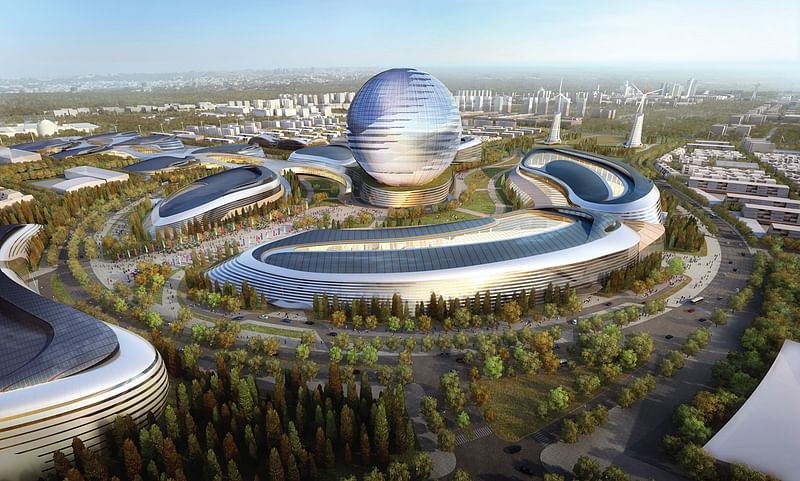
"FORM FOLLOWS PERFORMANCE
The defining symbol of the EXPO-2017 site will be the sphere-shaped Kazakhstan Pavilion (24,000 sm), located at the center of Expo City. The pavilion will have a transformative skin that will reduce thermal loss and reduce interior solar glare. A host of integrated systems, including photovolatics, will save and increase the energy output of the building simultaneously.
Each of the Expo buildings was designed to take advantage of their site location. For example, everything in the residential development, from the street grid rotation, the block size and the distribution of building mass was developed through a series of studies to reduce energy use, improve comfort levels (indoors and outdoors) and increase energy harvesting for each unit.
'The form and material expression of the buildings was based on their performance, providing a distinguishable language specific to its site and culture,' says AS+GG partner Adrian Smith, FAIA. 'The building forms are the direct result of a considerate and thorough design process which AS+GG practices as ‘Form Follows Performance.’”
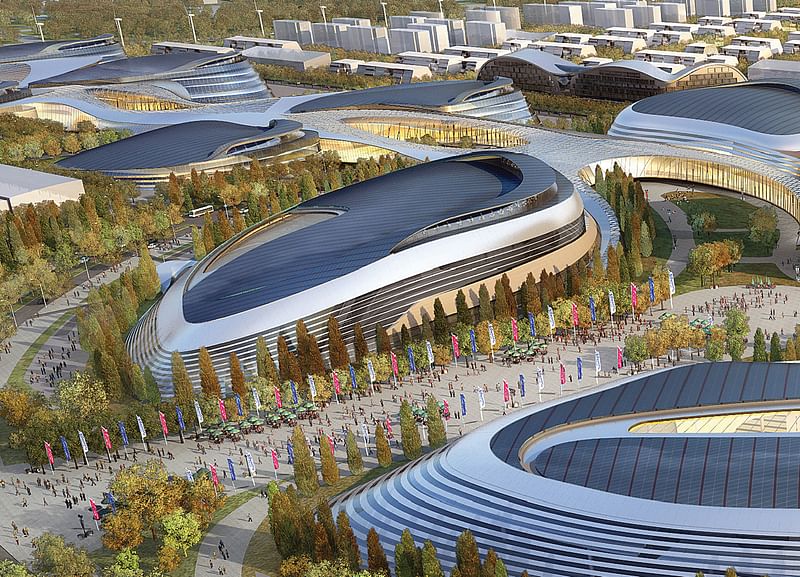
"PHASED DEVELOPMENT
Split into two phases, the 174 ha project will feature exhibition and cultural pavilions (118,620 sm); a residential development (686,000 sm); service areas including shopping, socio-cultural, educational and civic facilities; parks (72,000 sm); and parking.
Phase 1 or the “Expo Mode,” will see the design and construction of the exposition buildings including the central Kazakhstan Pavilion; Theme, Corporate and International Pavilions; as well as hotel, retail, art and performance spaces. The first phase will also include the design and construction of a series of buildings that will act as a “covered city,” which will include retail, residential and office spaces. Phase 1 will be completed by June 2017 to serve the Expo and its visitors.
Phase 2 or the “Legacy Mode,” will finalize the first Third industrial Revolution community. The Expo buildings will be converted into an office and research park, attracting international companies and entrepreneurs. Expo parking and service zones will be transformed into thriving and first class integrated neighborhoods including an additional 700 residential units, as well as office, hotels, local markets, and civic and educational facilities."
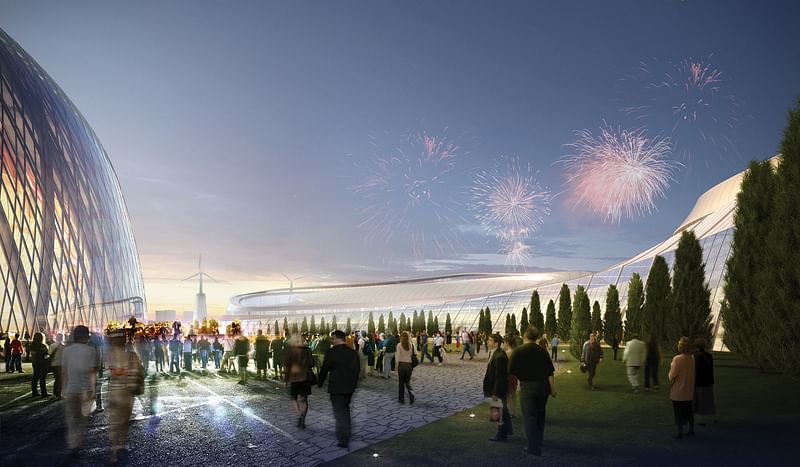

"MASTER PLAN
The master plan for Expo City was designed around the same principle. The community’s urban design was determined by site specific indicators such as weather conditions, cultural context and land accessibility. AS+GG executed a series of studies with the goal of minimizing the site’s energy-use, while maximizing its energy harvesting potential and comfort levels. The resulting analysis offers the most efficient orientation in order to optimize solar radiation to reduce energy usage for heating. Not only does this strategy improve user comfort but it also maximizes the potential energy that can be generated from building mounted photovolatics.
'The crucial difference of this project is that it is not a demonstration. EXPO-2017 will form the basis of a truly sustainable community that will serve as a legacy for Astana and Kazakhstan.' says AS+GG Partner, Robert Forest AIA. 'The sustainable aspects of the project will continue after the expo is finished. The design will be a catalyst for scientific/academic research and development, which will create new industries, unique skill sets and new job opportunities.'"

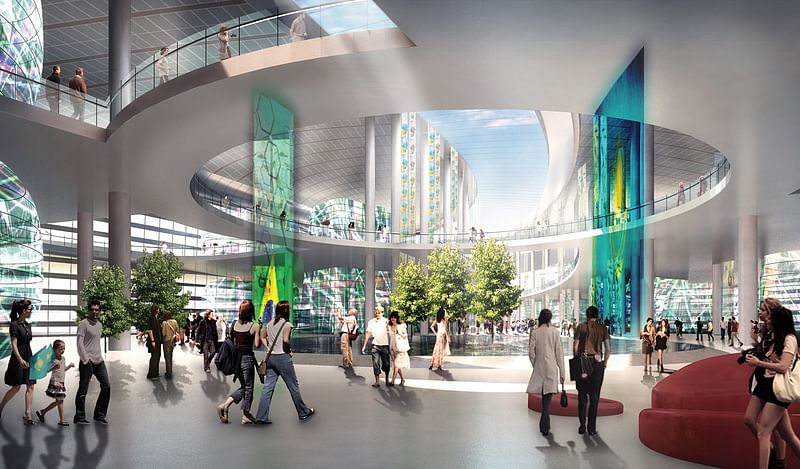

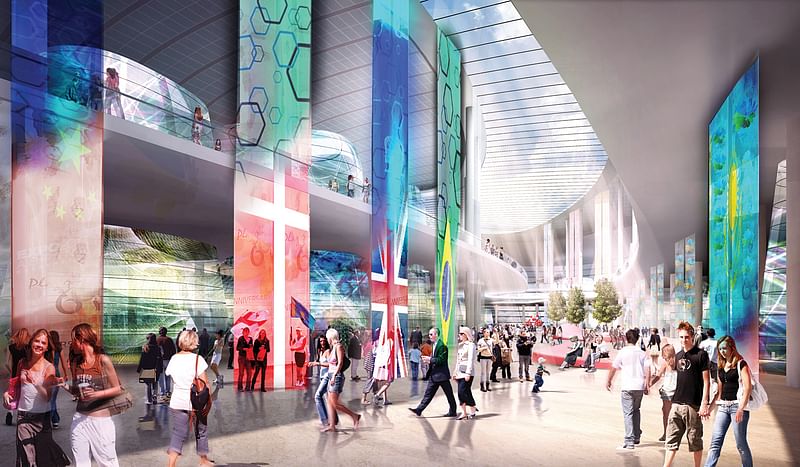
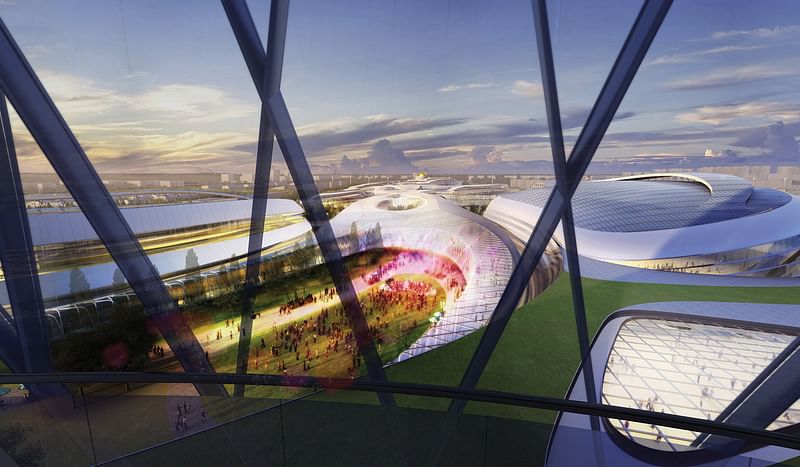
"Also important is the lasting physical connections that will be developed from the Expo site to existing sites around Astana. For example, a covered city concept has been developed to connect the Nazarbayev University, the train station and the Expo buildings. This zone will encourage pedestrian use and connectivity all year round and will include residential, office and retail use.
There will also be a public park connection that will stretch north past the Expo site, linking to a larger park system that will culminate at Bayterek Tower. To the north, the park system will be anchored by the tower; toward the south, by the “New Symbol of Astana:” the Kazakhstan Pavilion.
The site-wide infrastructure concept, developed by the AS+GG team, is an integration of occupants, buildings and utilities. A smart energy grid, smart recycled water grid, integrated waste management system, and interseasonal underground thermal energy storage will be developed under the purview of AS+GG’s sustainable design group with sustainability goals that include peak and total energy demand reduction, water reduction and waste to landfill reduction targets."
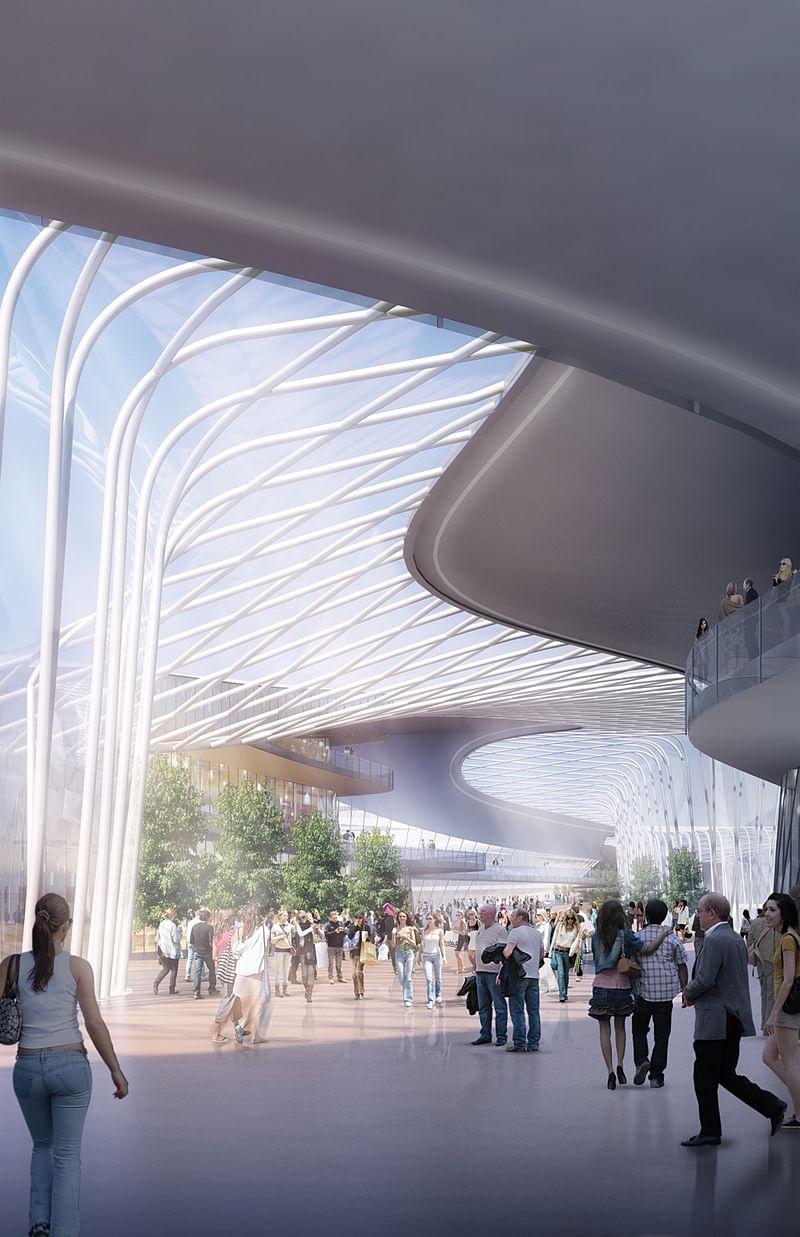
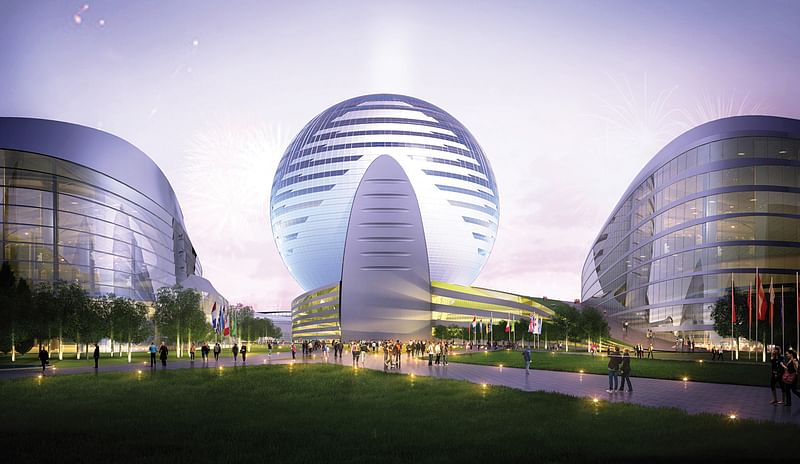
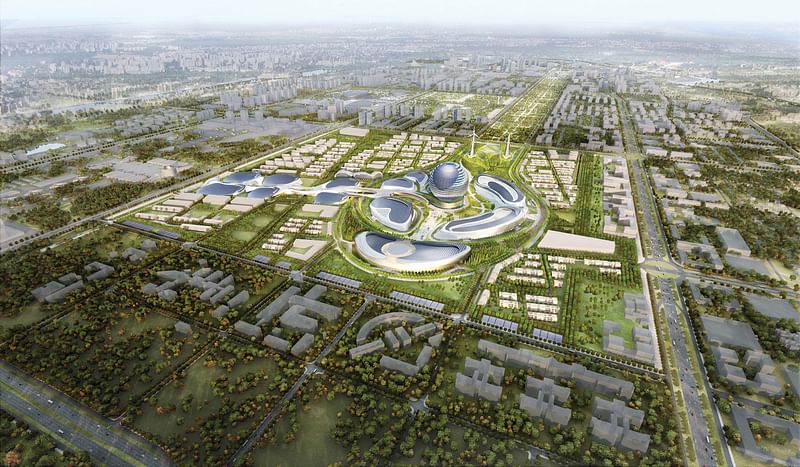
"WINNING TEAM
PositivEnergy Practice (PEP) will develop the design for highly-efficient mechanical, electrical, plumbing, fire protection and smart grid low-voltage systems inside the various individual buildings across the Expo site. They will also design the building integrated renewable energy systems distributed across the buildings, including solar panels, wind turbines, and ground-coupled heating and cooling technologies, as well as help to develop the design of the smart grid infrastructure.
Werner Sobek will develop optimized structural systems for the EXPO-2017 pavilions. The firm will also devise in detail the structural systems designed for the pavilion buildings during the 'Expo Mode' will efficiently be converted into an office complex in the 'Legacy Mode.'"

For more info, click here.
All images © Adrian Smith + Gordon Gill Architecture.

Share
0 Comments
Comment as :